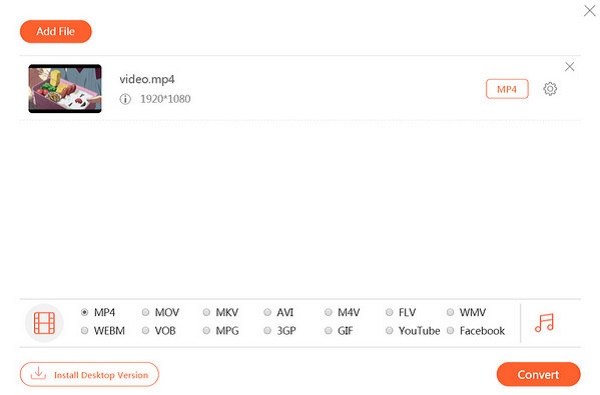

Are there archive files that will not convert?.Yes, those protected by Acrobat security methods will not complete the conversion process. Are there PDF files that will not convert?.No, we no longer support converting videos from video sharing websites as it is against their terms of use. Can I convert files using links to video-sharing sites such as ?.If it happens, our support team will correct the error and let you know about the outcome of the conversion process. What does it mean?īecause of the variety of file formats, containers, codecs and file attributes used out there, errors could occur with some conversions. We'll keep your file for 1 hour once it's been converted.


The registered codecs for MPEG-4 Part 12-based files are published on the website of MP4 Registration authority (). A separate hint track is used to include streaming information in the file. Most kinds of data can be embedded in MPEG-4 Part 14 files through private streams. An AVI file takes the form of a single chunk in a RIFF formatted file, which is then subdivided into two mandatory "chunks" and one optional "chunk". Like most modern container formats, it allows streaming over the Internet.ĪVI is a derivative of the Resource Interchange File Format (RIFF), which divides a file's data into blocks, or "chunks." Each "chunk" is identified by a FourCC tag. Like most modern container formats, it allows streaming over the Internet.MPEG-4 Part 14 or MP4 is a digital multimedia format most commonly used to store video and audio, but can also be used to store other data such as subtitles and still images. MPEG-4 Part 14 or MP4 is a digital multimedia format most commonly used to store video and audio, but can also be used to store other data such as subtitles and still images. AVI files can contain both audio and video data in a file container that allows synchronous audio-with-video playback. International Organization for StandardizationĪudio Video Interleaved (also Audio Video Interleave), known by its initials AVI, is a multimedia container format introduced by Microsoft in November 1992 as part of its Video for Windows software. Video/vnd.avi, video/avi, video/msvideo, video/x-msvideo


 0 kommentar(er)
0 kommentar(er)
